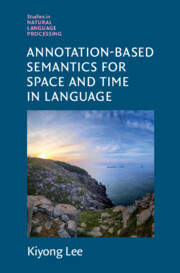Book contents
- Frontmatter
- Dedication
- Contents
- Foreword by James Pustejovsky
- Preface
- Acknowledgements
- Part I Fundamentals
- Part II Time and Events
- 7 Temporal Ontology
- 8 Normalizing TimeML with Some Modifications
- 9 Extending the Range of Temporal Annotation
- 10 Proper Interpretation of Temporal Relators
- Part III Motion, Space, and Time
- References
- Index
9 - Extending the Range of Temporal Annotation
from Part II - Time and Events
Published online by Cambridge University Press: 05 August 2023
- Frontmatter
- Dedication
- Contents
- Foreword by James Pustejovsky
- Preface
- Acknowledgements
- Part I Fundamentals
- Part II Time and Events
- 7 Temporal Ontology
- 8 Normalizing TimeML with Some Modifications
- 9 Extending the Range of Temporal Annotation
- 10 Proper Interpretation of Temporal Relators
- Part III Motion, Space, and Time
- References
- Index
Summary
In Chapter 9, I introduce eXTimeML, an extended variant of ISO-TimeML, with three extensions. (i) Temporal measure expressions are annotated as part of generalized measure: e.g., 30 hours. (ii) Quantified temporal expressions are annotated as part of generalized quantification: e.g., every day. (iii) Adjectives and adverbs are annotated as modifiers of nouns and verbs, respectively: e.g., daily, never. Temporal measures and temporal quantifiers are treated as part of generalized measures and quantifiers. I then illustrate how the representation language of ABS applies to each of these extensions in eXTimeML by deriving appropriate (logical) semantic forms from the well-formed annotation structures of temporal measures, quantifiers, and modifiers. Semantic forms are then interpreted with respect to admissible models, constrained by the formal definitions of logical predicates such as twice or three thousand.
- Type
- Chapter
- Information
- Annotation-Based Semantics for Space and Time in Language , pp. 235 - 286Publisher: Cambridge University PressPrint publication year: 2023

